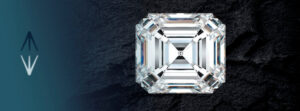Buying a diamond is a decision that combines emotion, investment, and commitment. Unfortunately, many people make mistakes that end up affecting both their experience and their wallet. In this article, we show you the most common mistakes when buying diamonds and how to avoid them to make a safe and satisfying purchase. If you’re still unsure which shape to choose, we recommend checking this comparison of popular diamond cuts.
Why is it important to know the mistakes when buying a diamond?
The world of diamonds can seem intimidating for an inexperienced buyer. There are many variables that influence the stone’s value, and not understanding them can lead to overpaying for lower quality or even buying a low-authenticity diamond. Knowing the common mistakes is the first step to making an informed and safe purchase.
Mistake 1: Not understanding the 4Cs of a diamond
The 4Cs are the foundation of diamond evaluation. They refer to four fundamental characteristics: Color, Cut, Clarity, and Carat Weight.
How the 4Cs affect value and quality
- Color: Colorless diamonds (grades D-F) are more valuable than yellow-tinted ones.
- Cut: Determines brilliance and symmetry. A poor cut can dull even a diamond with good color and clarity.
- Clarity: Evaluates the presence of internal or external inclusions and imperfections.
- Carat Weight: Reflects the weight of the diamond, but does not guarantee quality if the other factors are lacking.
Failing to consider these variables can lead to purchasing a diamond that’s not worth what you pay.
Mistake 2: Relying solely on price
Chasing the lowest price without evaluating quality is a major mistake. A cheap price may hide a poorly cut diamond, one with many inclusions, or lacking certification.
Value-for-money in genuine diamonds
A well-valued diamond is not necessarily the cheapest, but the one offering the best balance between the 4Cs and price. It’s often better to choose a slightly smaller diamond with a better cut and clarity.
Mistake 3: Buying without a gemological certificate
A diamond without a reliable certificate is a risky bet. This document guarantees its characteristics and authenticity.
Which certificates are trustworthy?
- GIA (Gemological Institute of America)
- IGI (International Gemological Institute)
- HRD (Hoge Raad voor Diamant)
Always demand a gemological certificate issued by an internationally recognized entity.
Mistake 4: Not checking the seller’s reputation
The seller is as important as the diamond. Buying from uncertified or unknown sellers can result in scams or low-quality products.
Red flags in physical and online stores
- Negative or missing online reviews
- Lack of information about the diamond’s origin
- No gemological certificates provided
- No clear return policies
Mistake 5: Ignoring the cut that best suits your style
Cut not only affects a diamond’s appearance, but also defines its brilliance and style.
Choosing the right shape for your style
Each cut has a unique visual language:
- Round Brilliant: the most classic and radiant.
- Princess: modern and sophisticated.
- Emerald: elegant with a vintage feel.
- Oval, pear, or heart: ideal for those seeking originality.
Learn more in our diamond cut comparison guide.

How to avoid these mistakes when buying a diamond
Avoiding these mistakes is possible if you make informed decisions:
Practical tips for a safe purchase
- Learn about the 4Cs and how they affect a diamond’s value.
- Compare options, but don’t prioritize price over quality.
- Always demand a gemological certificate.
- Research the seller’s reputation.
- Choose the cut that best suits your style and occasion.
Conclusion
Buying a diamond can be as rewarding as it is complex without the right information. Avoiding mistakes is key to ensuring your investment is safe, high quality, and truly reflects what you want to express with that piece of jewelry. Understanding the 4Cs, buying from trusted sources like Diamantes.com, requesting certifications, and choosing the right cut are essential steps for making the right decision. Remember: a diamond is forever, and choosing it wisely makes all the difference.
Frequently Asked Questions
What is the most common mistake when buying a diamond?
Not knowing the 4Cs, which can lead to overpaying for a low-quality diamond.
Is it safe to buy diamonds online?
Yes, as long as you do it on trusted sites like Diamantes.com, which guarantee certifications, transparency, and clear return policies.
What should a good gemological certificate include?
It should detail the diamond’s color, clarity, cut, and weight, and be issued by entities such as GIA, IGI, or HRD.
How can I tell if a diamond is authentic?
A diamond’s authenticity is confirmed by a gemological certificate from a recognized entity like GIA, IGI, or HRD. An authentic diamond also doesn’t fog up, has high thermal conductivity, and should be purchased from trustworthy stores.




